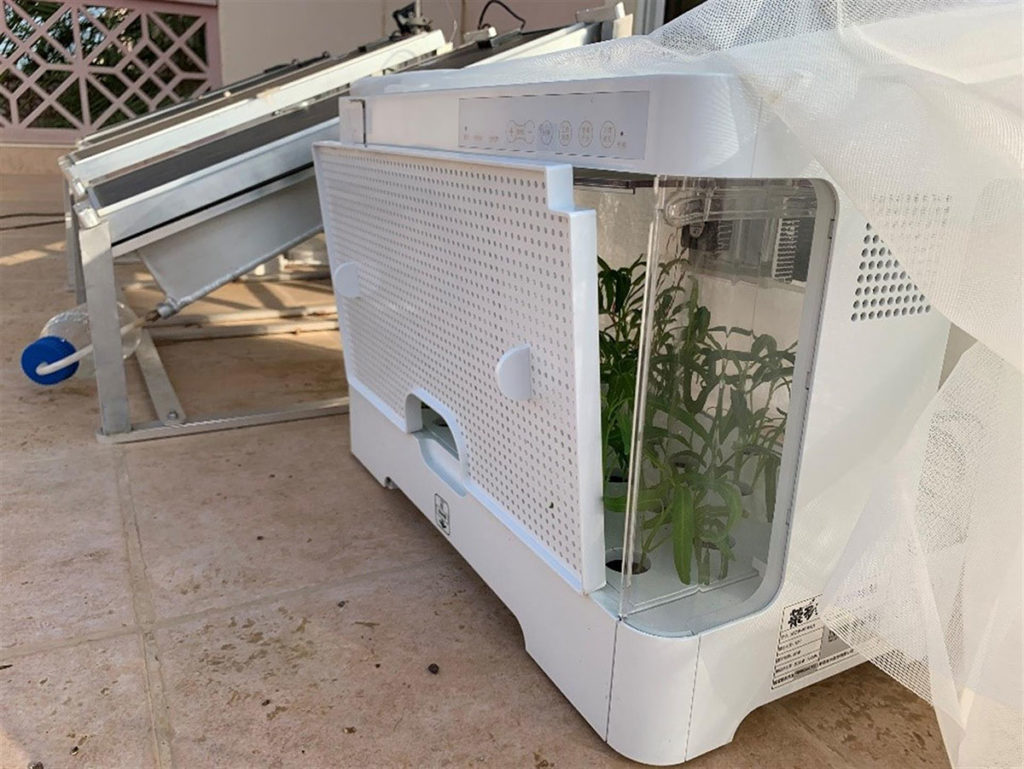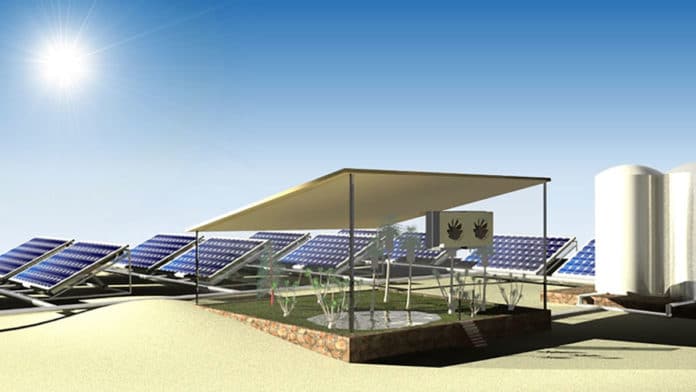Stable supply of water, energy, and food are the three of the most essential and indispensable factors of modern life. However, a fraction of the world’s population still doesn’t have access to clean water or green power, and many of them live in rural areas with an arid or semi-arid climate.
Scientists at Saudi Arabia’s King Abdullah University of Science and Technology (KAUST) have developed a solar-driven system that successfully grows crops by using water drawn from the air while producing electricity. The experimental system combines photovoltaic panels with an absorbent hydrogel to make water out of the air using clean energy that would’ve been wasted and is suitable for decentralized, small-scale farms in remote places like deserts and oceanic islands.
The integrated water-electricity-crop co-production system (WEC2P) is composed of a solar photovoltaic panel placed atop a layer of hydrogel, which is mounted on top of a large metal box to condense and collect water.

The hydrogel can effectively absorb water vapor from ambient air and release the water content when heated. The presence of this layer also increases the efficiency of the photovoltaic panel by about 9% since it absorbs excess heat while keeping the panel’s temperature lower.
The team used the waste heat from solar panels when generating electricity to drive absorbed water out of the hydrogel. The metal box below collects the vapor and condenses the gas into water, which can be collected for use in irrigation – or for drinking.
Researchers conducted a plant-growing test by using the WEC2P system in Saudi Arabia for two weeks in June when the weather was very hot. They used the water solely collected from air to irrigate 60 water spinach seeds planted in a plastic plant-growing box. During the experiment, the solar panel, with a hydrogel layer that was about the size of “the top of a student desk,” generated a total of 1,519 watt-hours of electricity and about 2 liters of water, which allowed 57 out of 60 of the water spinach seeds to sprout and grow normally to 18 centimeters.
“Our goal is to create an integrated system of clean energy, water, and food production, especially the water-creation part in our design, which sets us apart from current agro-photovoltaics,” says senior author Peng Wang. The team plans to create a better hydrogel that can absorb more water from the air to turn the proof-of-concept design into an actual product. They hope their design can be a decentralized power and water system to light homes and water crops.
